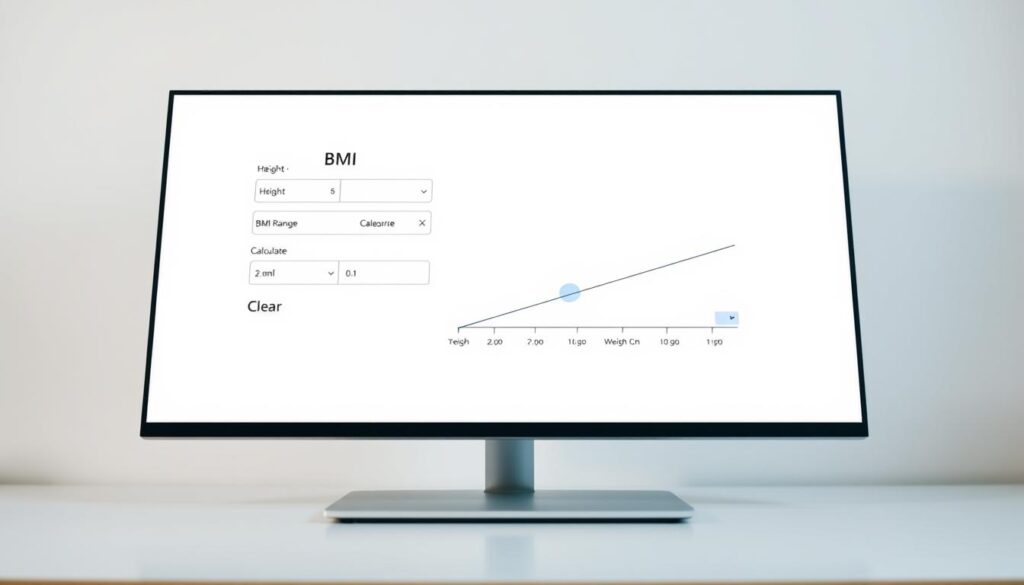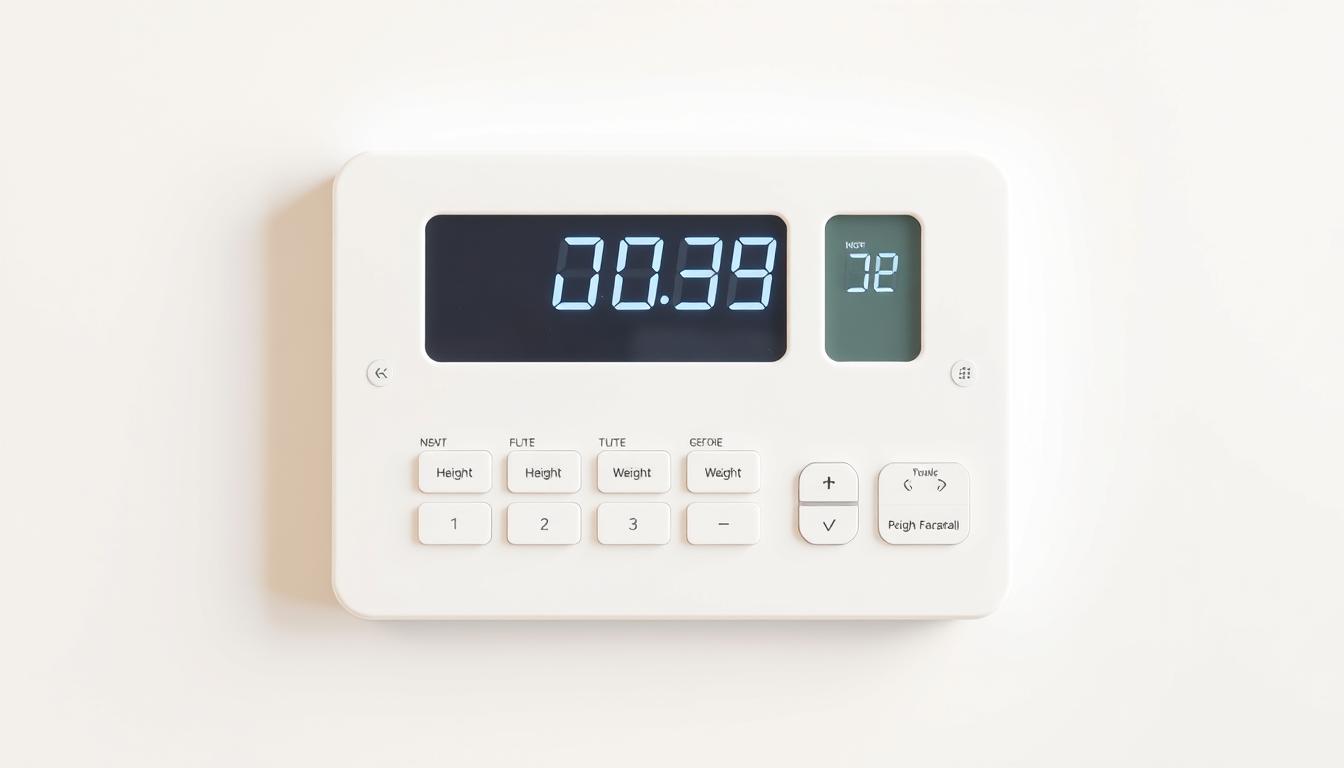What if a single number could reveal whether your current measurements align with long-term health goals? Body mass index (BMI) has been a cornerstone of health assessments for decades, but many adults struggle to interpret its meaning. Our guide cuts through the confusion with data-backed clarity and actionable insights.
BMI evaluates weight relative to height using a simple formula. While it doesn’t measure body fat directly, it helps categorize adults into four groups: underweight, healthy range, overweight, and obesity. We’ve designed our tool specifically for individuals aged 20+, using standards from the CDC and WHO to ensure reliability.
This article breaks down how the calculation works in both pounds/inches and kilograms/meters. You’ll discover why healthcare professionals use this metric, its limitations in assessing muscle mass, and how it fits into broader wellness strategies. We’ll also share practical steps for interpreting your results and making sustainable lifestyle changes.
Key Takeaways
- BMI measures weight-to-height ratio using globally recognized formulas
- Our calculator follows guidelines for adults aged 20+
- Includes data validation from leading health organizations
- Highlights both benefits and limitations of BMI assessments
- Prepares readers for deeper analysis in later sections
Ready to see where you stand? Use our trusted tool to calculate your numbers, then keep reading to understand what they mean for your unique health journey.
Understanding BMI and Its Role in Weight Management
Health professionals use body measurements to identify potential concerns before they escalate. One key metric helps gauge whether someone’s weight might contribute to specific conditions. Let’s explore how this screening tool works and why it remains relevant.
What Is Body Mass Index and How Is It Calculated?

The body mass index formula compares weight to height squared. For pounds and inches: multiply weight by 703, then divide by height squared. Metric calculations use kilograms divided by meters squared. Both methods categorize results into four ranges:
- Below 18.5: Underweight
- 18.5–24.9: Healthy range
- 25–29.9: Overweight
- 30+: Obesity
These thresholds come from decades of population studies by organizations like the National Center for Chronic Disease Prevention. However, muscle mass and bone density can skew results for athletes or older adults.
Health Risks and Benefits: Why This Metric Matters
Higher scores often correlate with increased chances of heart disease, diabetes, and joint issues. Research shows maintaining numbers below 25 reduces these risks significantly. Yet this measurement works best when combined with waist circumference, blood pressure checks, and family medical history.
Our BMI calculator simplifies the math while reminding users it’s one piece of a larger health puzzle. Pair your result with professional guidance to create tailored strategies for sustainable weight management.
Using the BMI calculator for overweight adults
Understanding your body’s metrics starts with accurate measurement tools. Our system simplifies the process while aligning with clinical standards, ensuring you gain meaningful insights without guesswork.

Step-by-Step Instructions on How to Use the Tool
Begin by selecting your preferred measurement system—US units (pounds/feet) or metric (kilograms/meters). Enter your current weight and height precisely, avoiding approximations. The system automatically applies the formula (weight ÷ height²) and adjusts for unit conversions.
Common errors include mixing measurement systems or rounding numbers excessively. Double-check entries before submitting to prevent skewed results. The tool also calculates secondary metrics like BMI Prime, which compares your result to the “healthy” threshold of 25.
Interpreting the Results for Better Health Insights
After receiving your score, match it to these categories:
- Below 18.5: Potential underweight
- 18.5–24.9: Typical healthy range
- 25–29.9: Elevated range
- 30+: High-risk category
Higher numbers often suggest increased body fat percentages, which correlate with conditions like hypertension. However, athletic individuals may see elevated scores due to muscle mass. Cross-reference your result with CDC’s official resources and consider waist circumference for a fuller picture.
Remember: This metric is a screening tool, not a diagnostic. Pair it with bloodwork or professional guidance to build a complete health strategy.
Integrating BMI Insights into a Holistic Health Strategy
True wellness extends beyond numbers on a scale. While tracking body measurements provides valuable clues, lasting health requires balancing physical data with daily habits and professional guidance.
Building Sustainable Habits Beyond Numbers
Maintaining a healthy weight involves consistent activity and mindful eating. Aim for 150 minutes of moderate exercise weekly—brisk walks or cycling count. Pair this with meals rich in whole grains, lean proteins, and colorful vegetables.
Small changes create big impacts. Swap sugary drinks for water, take stairs instead of elevators, and prioritize sleep. These adjustments support heart health and metabolic function, even if your scale doesn’t budge immediately.
Recognizing When Expert Input Matters
Consult healthcare providers if you experience unexplained weight changes, fatigue, or family history of heart disease. Those with chronic conditions like diabetes benefit from personalized nutrition plans that consider age, muscle mass, and medication interactions.
The Bigger Picture of Physical Wellbeing
Body weight metrics don’t reveal everything. Athletes might show elevated scores due to dense muscle mass, while some “normal” ranges hide high body fat percentages. Combine your data with blood pressure checks, cholesterol tests, and waist measurements for accurate insights.
Remember: Health thrives on balance. Use your numbers as conversation starters with professionals, not final verdicts. Pair them with joyful movement and stress management to build resilience against preventable diseases.
Conclusion
Reliable health tools empower smarter decisions. Our body mass index assessment measures weight relative to height, offering insights into potential risks tied to excess fat. While this metric groups adults into four categories, it works best when paired with other health data like activity levels and body composition.
We designed our tool to simplify calculations while highlighting its limitations. Athletic individuals might see higher numbers due to muscle mass rather than fat—a key detail supported by medical research. Always combine your results with professional guidance to address personal factors like age or family history.
Use this information as a starting point, not a final verdict. Track changes over time and explore effective strategies that align with your unique needs. Small, consistent adjustments in nutrition and movement often yield lasting benefits.
Your next step? Check your numbers, then build a plan that celebrates progress beyond the scale. We’re here to help you navigate this journey with clarity and confidence.


